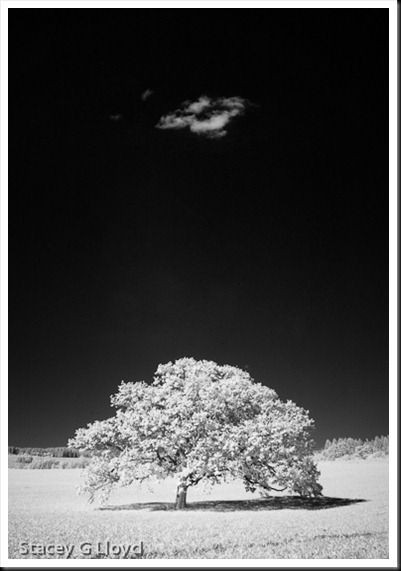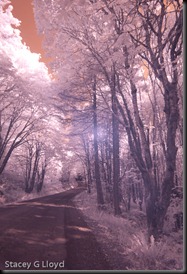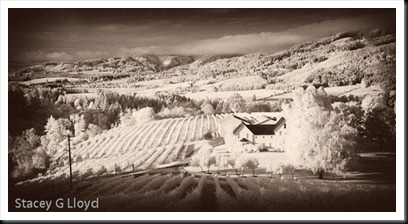 As I continue to shoot different subjects in infrared, I am starting to learn a couple things I didn’t know. Note that I am shooting IR using a Nikon D70 which has been converted/modified for infrared image capture.
As I continue to shoot different subjects in infrared, I am starting to learn a couple things I didn’t know. Note that I am shooting IR using a Nikon D70 which has been converted/modified for infrared image capture.
REVISED – I realized as I was shooting more IR today that what I wrote down yesterday was backwards. My apologies. Here is a more correct explanation
- CORRECTED – Metering behavior is different. At first it seemed a bit erratic. While the meter still looks at the visible light, the amount of IR energy in the scene can vary with the subject and time of day. If the scene is mostly green foliage the meter will read that typically as 18% gray tone. However, green foliage emits a lot of IR and is thus very bright (more as the day goes on) – it is almost white. Your meter is effectively overexposing for a scene that is mostly white not gray as it measured. This means you need to adjust the EV –1 to –2 to keep the image from blowing out. On the opposite end, images with a lot of water or other “cool” elements (that record nearly black) may require adjusting your EV +1 to +2. For a nice mix of say sky and foliage the meter gets it about right. In time you start to see the infrared image in your head and compensate your exposure accordingly. Checking the LCD and histogram is a good idea too.
- Not all lenses behave the same. Besides the usual lens flare issue you can encounter in normal photography, there are hot spots (milky areas near the center of the image – shown in the adjacent image). Some lenses are very prone to this while others are not. Apparently the behavior depends on the coatings for a specific lens. It is aggravated by small apertures. Using wider apertures may help but may not eliminate the problem (but you lose depth
 of field). Bottom line, standard camera lenses are not necessarily designed or tested for the infrared light spectrum. One last note, apparently this hot spot can often be eliminated in post processing by not using the color channel in which the spot is dominate. I didn’t find that worked on the image shown to the right.
of field). Bottom line, standard camera lenses are not necessarily designed or tested for the infrared light spectrum. One last note, apparently this hot spot can often be eliminated in post processing by not using the color channel in which the spot is dominate. I didn’t find that worked on the image shown to the right. - Even if your modified camera was adjusted so that the IR light focuses correctly on your sensor for one lens it may not for others. Same bottom line as above – standard cameras and lenses are not designed for IR. If you avoid shooting with the aperture too wide open this will not be a problem.
Now don’t let these things scare you off from going into digital IR. They aren’t that big of an issue once you know about them. They might limit you in some ways, but infrared photography opens up a whole new photographic frontier for you to explore.
Finally, I have been experimenting with different post processing to see what I like. The final blog image is one example of using toning with a heavy vignette on an infrared image.





